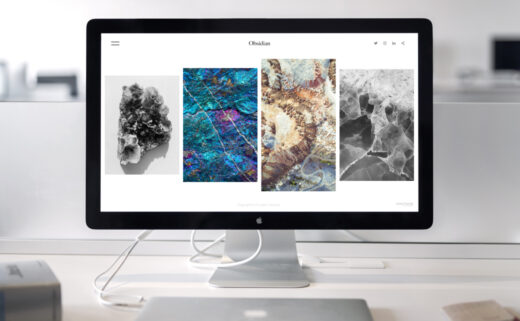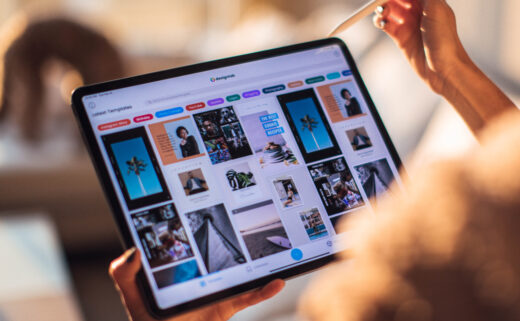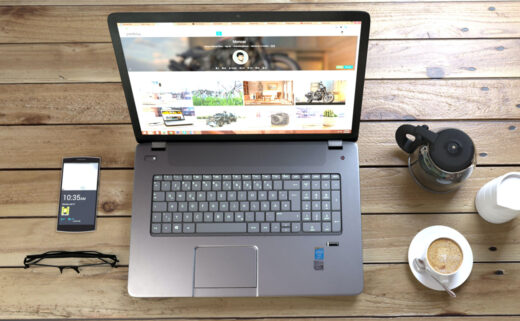Brand Advice: How to Design High-Converting Landing Pages
In today’s digital world, a website’s landing page often serves as the initial handshake between a brand and its potential customer. It’s that critical first impression a visitor gets, shaping their perception and setting the stage for future interactions.
Given the intense competition in the digital marketplace, businesses can’t afford to overlook their significance. A well-designed and optimised landing page doesn’t just look good; it efficiently enhances the user experience.
Moreover, it directly influences boosting conversions, turning curious visitors into committed customers. If your landing page is compelling and relevant, it becomes an invaluable asset, pulling its weight in your digital marketing strategy.
With this understanding, prioritising the art of designing high-converting landing pages becomes not just advisable but essential for online success.

Designing High-Converting Landing Pages: Key Elements of Effective Landing Pages
Every strong structure, whether physical or digital, starts with a sturdy foundation. An effective landing page rests on a few non-negotiable pillars.
Here’s a concise breakdown of these cornerstones:
• Clear value proposition: Upon landing, visitors should immediately grasp the benefit of staying on your page. What problem does your product or service solve? Highlighting this can differentiate your offering from competitors and convince users of its worth.
• Engaging visuals: Incorporate relevant, high-quality images or videos that complement your message and guide the visitor’s attention. An impactful visual can communicate a message quicker than text, leaving a lasting imprint on a visitor’s memory.
• Trust signals: Having testimonials, awards, or certifications can be game-changers. These demonstrate that real people have found value in your offering or that credible organizations recognize your worth.
• Call-to-action (CTA): This is the doorway to conversion. It should be clear, persuasive, and enticing. Whether you want visitors to sign up, buy, or learn more, your CTA should guide them smoothly toward that goal without confusion or hesitation.
User Experience: Making It Effortless for Visitors
If a website feels cumbersome or unintuitive, users, surrounded by endless options, are just one click away from exploring alternatives.
To keep their interest, ensure an intuitive and hassle-free user experience (UX). Overcrowded pages are overwhelming, leading to swift exits. To avoid that, consider a streamlined design. Striking a balance where less is more can keep your visitors’ attention focused.
Furthermore, ensuring mobile optimisation is not just a nice to have but a necessity. Modern users expect a uniform experience irrespective of the screen size. Another critical factor is page load speeds. It’s simple: Time is valuable, and no one wants endless waiting for a page to load.

Lastly, think about navigation simplicity. Users should be able to find what they’re looking for without any roadblocks. Minimalistic menus, intuitive layout, and easily accessible information are all hallmarks of good UX.
Crafting Compelling Content
In digital marketing, content is indeed the cornerstone. However, it transforms from simple text into a potent tool for engagement when fine-tuned with precise branding skills. The first step is understanding and customising the content according to your target audience’s needs.
Recognising their preferences, challenges, and aspirations allow brands to resonate and foster connection.
Secondly, while product features might impress some, most visitors are interested in the benefits. Highlighting benefits over features answers the vital question: “What’s in it for me?” It shifts the narrative from what you offer to how it can improve the visitor’s life.
Clear, concise messaging ensures the core message isn’t lost in translation. Steering clear of jargon and complex language improves readability and ensures that even those unfamiliar with the industry can comprehend the value proposition.

The Psychology of Colour
Colours have a profound impact on human emotions and perceptions. They silently sway our decisions and shape our behaviour online.
In designing high-converting landing pages, using colours can significantly enhance conversion rates. Grasping colour meanings is foundational; for instance, red often signals urgency or importance, while blue can instills trust and calmness.
Beyond understanding, aligning colours with the brand identity is essential. Consistency in colour schemes fosters brand recognition and builds trust with users over time. However, what looks good on paper might not always resonate on screen.
It is where A/B testing colour schemes enter the picture. By comparing different palettes and evaluating their performance, brands can determine which hues drive the most engagement and action.
Optimising CTA Buttons
CTA, or Call-to-Action buttons, serve as crucial touchpoints, bridging the gap between mere browsing and purposeful action on a website. Their optimisation is central to effective, conversion focused web design. A well-optimised CTA has the power to turn visitors into loyal clients, so every detail counts.
Positioning is therefore a prime consideration.
While placing a CTA ‘above the fold’ ensures immediate visibility, strategic placement elsewhere can be equally effective, especially if it aligns with user behaviour or content flow. In terms of design, CTAs should be prominent without being disruptive.
They must stand out without appearing out of place, guiding the visitor’s attention without overwhelming them.
Lastly, the button text is where the magic happens. It’s more than just words; it’s an invitation, a directive. Using engaging and action-oriented words can make all the difference. Phrases like “Learn More”, “Get Started”, or “Grab Yours” prompt action while offering value or evoking curiosity.
Refining Your Landing Page for Success
Stagnation is a recipe for decline. Constant refinement, guided by data, remains essential to staying ahead. It is where A/B testing shines. It involves comparing two versions of a webpage to see which performs better in terms of conversions.
Recognising the importance of regular testing is the first step. By frequently testing different elements, you can keep your landing page updated, relevant, and optimised for your target audience. Moreover, these tests often reveal surprising insights.
Sometimes, small changes in graphic design, such as tweaking a headline or adjusting a colour scheme, can yield significant results, enhancing engagement or boosting sales.
Fortunately, the digital age has brought forth various tools and platforms for effective A/B testing. Software like Optimizely or VWO makes the testing process seamless, providing actionable insights and real-time data.
Conclusion
For brands to make a genuine impact in the digital landscape, simply having an online presence isn’t enough. Enter the art of designing high-converting landing pages.
These are more than mere entry points. They’re meticulously crafted gateways, guiding visitors towards a specific action. Success here lies in incorporating all elements harmoniously, amplifying the page’s overall effect, from compelling content and engaging visuals to intuitive design and impactful CTAs.
Central to this effort is always keeping the end goal in mind: Conversion. It’s not just about attracting visitors but persuading them to take the desired action, be it signing up, purchasing, or any other objective.
Lastly, this evolving field has no “set it and forget it”.
Embracing continuous learning and iteration ensures your landing pages remain relevant, optimised, and primed for peak performance.








